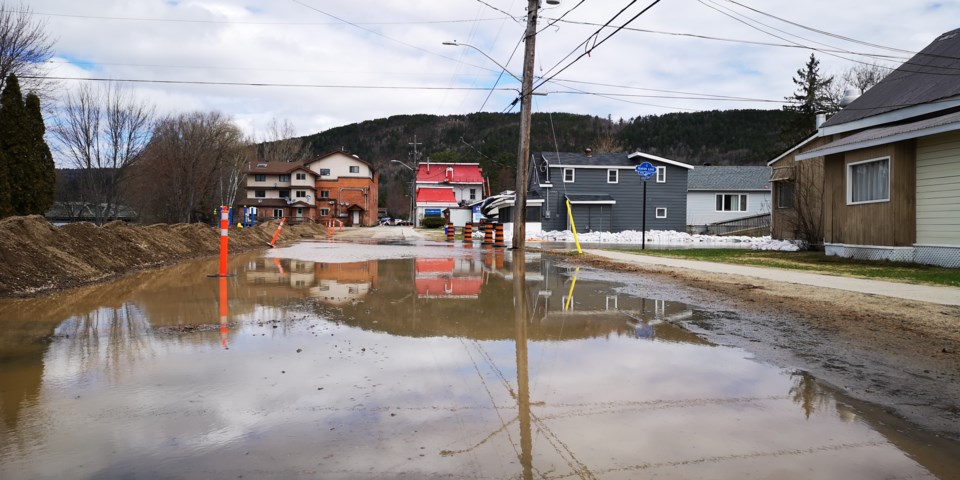Ontario Power Generation is trying to back up its decision-making relating to the flooding that has occurred around the Upper Ottawa River and including the Town of Mattawa.
See related: Breach of Sand Berm leading to more flooding problems in Mattawa
“OPG understands that high water is a concern for communities located along the Upper Ottawa River who are experiencing flooding this spring,” the OPG stated in a release.
“High amounts of rainfall plus significant snow pack have resulted in very high water levels within the river system. OPG has been working closely with municipalities and organizations including the Ottawa River Regulatory Planning Board, the Ministry of Natural Resources and Forestry and local conservation authorities on water management.”
The OPG insists it is doing everything to mitigate impacts from these events.
“Public Safety remains our top priority. In the spring, the amount of runoff increases, causing lakes and rivers to swell, which naturally increases the water levels throughout the river system. The speed of the river is partially determined by the slope, whereas the steeper slope allows the water to flow faster. As the water levels increase and rivers widen, so too does the speed at which the river flows.”
Part of the issue is that the combined increase of water elevation, volume and speed create a significant gradient/slope in the river and therefore the river’s profile becomes much steeper from one dam to another in the system.
“In relation to the conditions observed within the area of Otto Holden and Mattawa, it should be noted that many of the facilities on the Ottawa River have a limited holding capacity, the release noted.
The OPG says at certain times of the year, the upstream reservoir does not have sufficient storage to hold upstream water as it arrives at the station.
“Presently this is the case at the Otto Holden generating station as at this time it must pass the upstream flows from the Timiskaming area,” the release continued.
“While the flow rate within the river can be relatively constant over a specific timeframe, the cross-sectional area will vary throughout the river as the elevation and width changes. Water speed will also vary due to irregularities caused by rocks and the existence of natural gradients, i.e. variation in the slope of the river. Due to the characteristics within a river that are applicable to variations of gradient/slope, depth, width and restrictions, a backwater effect can occur over several kilometres and extend upwards of more than fifty kilometres.
“Backwater occurs when the flow of a river slows due to reaching a narrow section, flat area or obstruction. Under very high flow conditions water begins to ‘pile up’ raising upstream water levels. Within the reach between the Otto Holden G.S and Des Joachims G.S (near Rolphton, ON) facilities, a natural restriction exists from Mattawa to Klock. During spring periods where high water flows exist, this backwater effect will extend upstream to Mattawa. OPG strategically maintains a lower elevation at the Des Joachims dam in order to minimize this effect.
“In doing so, the elevation at Deux Rivières is low and thus the gradient/slope maximized across the reach from Otto Holden GS to Des Joachims. Simply stated, as the river flow increases, OPG maintains a low elevation at Des Joachims to minimize flooding upstream into the Mattawa area.”
The OPG states that maintaining lower water levels limits the amount of backwater effect created and subsequently assists to provide upstream flood mitigation.
“Once river flow declines to a point where the natural rapids no longer create a ‘backwater effect’ that places Mattawa at risk of flooding, OPG will raise the water levels at Des Joachims to the typical operating levels.”
The OPG adds that the Upper Ottawa River is expected to stabilize and the water will return to its natural level in the summer.
